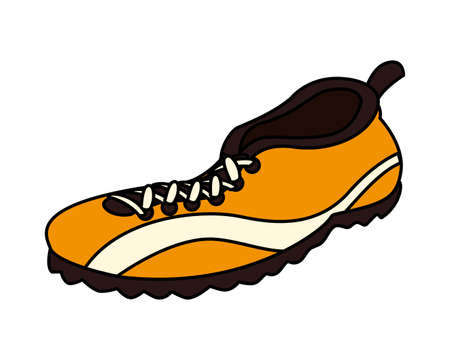Introduction to Thru-Hiking Tents
If you’re dreaming of hiking all the way from Georgia to Maine on the Appalachian Trail, trekking through the wild beauty of the Pacific Crest Trail, or conquering the rugged Continental Divide Trail, your tent will become your home on the trail. Choosing the right lightweight tent is a huge decision for thru-hikers, impacting everything from comfort and safety to how much fun you have each day.
What is Thru-Hiking?
Thru-hiking means hiking an entire long-distance trail end-to-end in one go. For many Americans, this often refers to epic adventures like the Appalachian Trail (AT), Pacific Crest Trail (PCT), or Continental Divide Trail (CDT). These journeys can take months and cover thousands of miles, so every ounce you carry truly matters.
Why Tent Weight and Reliability Matter
When you’re walking 15-25 miles a day for weeks on end, your backpack can feel heavier with every step. That’s why ultralight tents have become so popular—they help save precious energy while still giving you shelter from unpredictable weather. But weight isn’t everything. A tent also needs to be reliable enough to handle wind, rain, and wear-and-tear over hundreds of nights outdoors.
Key Considerations for Thru-Hikers
| Consideration | Why It Matters |
|---|---|
| Weight | Lighter tents mean less strain and fatigue over long distances. |
| Durability | Tents must withstand storms, UV exposure, and repeated setup/teardown. |
| Comfort | A good tent offers enough space to sleep well and store gear—essential for recovery. |
| Weather Resistance | Protection from rain, wind, and bugs keeps you safe and dry. |
| Packing Size | Tents that pack small leave room for food and other essentials in your pack. |
| Ease of Setup | Quick pitch means less hassle after a long day on the trail. |
| Value for Money | Balancing cost with performance is key for most hikers’ budgets. |
The American Long Trails: Unique Demands
The big three American trails each bring their own challenges. The AT is famous for its rain and humidity; the PCT has long stretches without water but can get windy at elevation; and the CDT throws everything from snow to blazing sun at hikers. That’s why choosing a tent that matches your planned trail—and your personal hiking style—is so important. In this guide, we’ll compare top lightweight tents that balance durability, comfort, and value—helping you find the perfect shelter for your adventure of a lifetime!
2. What Makes a Tent Great for Thru-Hikers?
When you’re thru-hiking long trails like the Pacific Crest Trail, Appalachian Trail, or the Continental Divide Trail, your tent becomes your home away from home. Picking the right one is crucial—not just for comfort but also for making sure you finish your trek strong. Let’s break down the must-have features that make a lightweight tent stand out for American thru-hikers.
Key Features to Consider
| Feature | Why It Matters | Thru-Hiker Pro Tips |
|---|---|---|
| Weight | Lighter tents reduce pack strain and fatigue over thousands of miles. | Shoot for under 2.5 lbs if solo; up to 4 lbs for two-person tents. |
| Packed Size | Space is at a premium in your pack—compact tents free up room for essentials. | Look for tents that pack down under 18 inches long. |
| Durability | American trails are rough—think rocky ground, high winds, and dense brush. | Ripstop nylon or Dyneema fabrics hold up best over months of use. |
| Weather Resistance | You’ll face everything from desert storms to Appalachian rain—reliable protection is key. | A solid rainfly and full bathtub floor keep you dry and warm. |
| Ease of Setup | After a 20-mile day, a fast pitch matters—especially in bad weather or fading light. | Freestanding or semi-freestanding designs save time and frustration. |
How These Features Play Out on US Trails
The US has incredibly varied conditions: blazing heat in the Mojave, sudden storms in the Rockies, and muggy nights in the Smokies. Your tent needs to be versatile. For instance, single-wall tents cut weight but can get stuffy in humidity; double-wall options handle condensation better, especially in the East. Strong poles and secure stakes are essential for wind-prone ridgelines out West. Many hikers love tents that use trekking poles as supports—saving precious ounces and cutting gear redundancy.
Packed Size Comparison Example
| Tent Model | Packed Dimensions (inches) |
|---|---|
| Zpacks Duplex | 8 x 5 x 6.5 |
| Big Agnes Tiger Wall UL2 | 18 x 5.5 |
| Nemo Hornet Elite OSMO 2P | 19 x 5.5 |
| Six Moon Designs Lunar Solo | 11 x 4.5 |
User-Friendly Setup Matters More Than You Think
If thunderstorms roll in or darkness falls fast, a complicated setup can mean wet gear or lost sleep. Many thru-hikers prefer color-coded poles, quick-clip systems, and easy guyline adjustments. Practice at home before hitting the trail so you’re not fumbling when it counts.

3. Quick Comparison: Top 10 Lightweight Tents
When it comes to thru-hiking in the U.S., having a tent that’s light, tough, and comfortable can make or break your adventure. To help you find the best shelter for your journey on trails like the Appalachian Trail, Pacific Crest Trail, or Colorado Trail, here’s a side-by-side comparison of the top 10 ultralight tents trusted by American backpackers. We’ve highlighted key specs, price points, and the ideal use cases for each.
| Tent Model | Weight (lbs/oz) | Capacity | Packed Size | Price (USD) | Best For |
|---|---|---|---|---|---|
| Zpacks Duplex | 1 lb 2 oz | 2P | 16″ x 6″ | $699 | Thru-hikers focused on ultra-low weight |
| Big Agnes Tiger Wall UL2 | 2 lbs 8 oz | 2P | 18″ x 5.5″ | $449 | Lightweight comfort, easy setup |
| Nemo Hornet Elite Osmo 2P | 2 lbs 1 oz | 2P | 19″ x 4.5″ | $599 | Packing small & fast trail conditions |
| MSR Hubba Hubba 2P | 3 lbs 4 oz | 2P | 19″ x 6″ | $499 | Durability in variable weather |
| Six Moon Designs Lunar Solo | 1 lb 10 oz | 1P | 11″ x 4.5″ | $260 | Solo trekkers looking for value & weight savings |
| TarpTent Double Rainbow Li | 1 lb 12 oz | 2P | 16″ x 5″ | $649 | Lighter couples & fast-packing duos |
| Gossamer Gear The One | 1 lb 2.5 oz | 1P | 11″ x 5″ | $299 | PCT solo hikers needing simplicity & space |
| Klymit Maxfield 2P | 3 lbs 3 oz | 2P | 20″ x 6.5″ | $349 | Bargain seekers wanting more room & features |
| Marmot Tungsten UL 1P | 2 lbs 6 oz | 1P | 18″ x 6″ | $329 | Campsite comfort with livable space |
| SlingFin Portal 2 | 2 lbs 14 oz | 2P | 14″ x 6″ | $565 | Tough conditions and stormy nights |
Main Takeaways from the Comparison Table:
- Zpacks Duplex and Gossamer Gear The One are the lightest options, great for those counting every ounce on long-distance trails.
- If you’re hiking as a pair and want more living space, look at tents like the MSR Hubba Hubba or SlingFin Portal for all-weather protection.
- Solo hikers who want to save cash without sacrificing quality should check out Six Moon Designs Lunar Solo or Marmot Tungsten UL.
- Tents like Big Agnes Tiger Wall and Nemo Hornet Elite Osmo balance comfort, weight, and packability—ideal for first-timers or thru-hikers looking for an easy setup after a long day on trail.
How to Pick Your Tent?
The right tent depends on your priorities—whether that’s shaving ounces for a major thru-hike, maximizing interior space for comfort, or finding the best deal without giving up too much durability. Always consider local weather conditions and campsite types found on classic American long trails before making your pick.
4. In-Depth Reviews and Real-World Performance
Comparing the Top 10 Lightweight Thru-Hiking Tents
When youre thru-hiking thousands of miles on iconic trails like the Pacific Crest Trail or Appalachian Trail, your tent becomes your home away from home. Comfort, durability, space, and value are what American hikers care about most. Here’s a detailed look at how each of our top 10 tents performs in real-world conditions, based on insights from the hiking community across the U.S.
Tent Comparison Table: Key Features at a Glance
| Tent Model | Weight (lbs) | Floor Space (sq ft) | Packed Size | Durability | Comfort Level | Price Range ($) |
|---|---|---|---|---|---|---|
| Zpacks Duplex | 1.19 | 28 | 7×13 in | High (Dyneema fabric) | Excellent for solo/duo | 600+ |
| Big Agnes Tiger Wall UL2 | 2.5 | 28 | 5.5×18 in | Very good (ripstop nylon) | Roomy for one, cozy for two | 400-500 |
| Nemo Hornet Elite 2P | 2.1 | 27.3 | 6×19 in | Good (silnylon) | Tight for two, comfy for one | 500-550 |
| Six Moon Designs Lunar Solo | 1.7 | 26.25 | 4×11 in | Great (silnylon) | Lotsa headroom for solo hikers | 260-300 |
| Tarptent Double Rainbow Li | 1.8 | 30.6 | 16×5 in | Top-notch (Dyneema) | Amazing space-to-weight ratio for two | 700+ |
| Marmot Tungsten UL 2P | 3.0 | 30.6 | 6×20 in | Tough (polyester ripstop) | User-friendly setup, spacious interior | 350-400 |
| REI Co-op Quarter Dome SL 2 | 2.8 | 28.7 | 7×17 in | Solid (nylon ripstop) | Ventilated and comfortable for two | 350-400 |
| MSR Hubba Hubba NX 2 | 3.5 | 29 | 6×18 in | Legendary reliability | Spacious and livable | 450-500 |
| Gossamer Gear The One | 1.2 | 18.6 | 5×11 in | Good (silpoly) | Minimalist comfort for solo hikers | 300-350 |
| Durston X-Mid 1P | 2.0 | 20.8 | 6×12 in | Strong design (silpoly) | Simple pitch, great ventilation | 220-300 |
User Experiences and Community Insights Across America
Zpacks Duplex: Ultralight King with Cult Status
The Zpacks Duplex is legendary among long-distance hikers, especially on the PCT where every ounce counts. Users love the easy pitch and bombproof Dyneema fabric, which shrugs off rain and wind but comes at a premium price point.
Shelter for Two: Big Agnes Tiger Wall UL2 & Tarptent Double Rainbow Li Stand Out
If you’re hiking as a pair or just want more elbow room, the Tiger Wall UL2 and Double Rainbow Li offer outstanding living space without a huge weight penalty. Hikers praise their vestibule sizes—plenty of space to stash muddy boots before crawling in after a long day.
Lone Wolves: Six Moon Designs Lunar Solo & Gossamer Gear The One
Solo thru-hikers appreciate the simple setup and airy interiors of these tents, plus their ability to handle unexpected downpours on the AT or CDT. They’re favorites among ultralight enthusiasts aiming for big mileage days.
The Classic Choice: MSR Hubba Hubba NX 2
This tent is known coast-to-coast for its dependability and comfort during shoulder season storms or muggy summer nights. The freestanding design appeals to those camping on rocky ground or unfamiliar terrain.
Bargain Pick: Durston X-Mid 1P
This tent has quickly become a hiker favorite due to its clever design, fast pitch, excellent ventilation, and affordable price tag—especially popular with budget-conscious section hikers.
Cultural Tips from American Hikers
A lot of U.S.-based hikers share feedback through forums like Reddit’s r/Ultralight or Facebook groups like “Appalachian Trail Class of [Year].” Community wisdom says: always test your gear before hitting trailheads like Springer Mountain or Campo; don’t skimp on weather protection if you’re heading into high Sierra or New England; and when in doubt, go with what makes you feel at home—even if it’s a bit heavier!
No matter which tent you choose from this list, there’s an option that fits your comfort needs and budget while holding up to America’s wildest trails.
5. Tips for Buying the Right Tent for Your Thru-Hike
Know Your Trail and Weather Conditions
Before you pick a tent, think about where youll be hiking. The Appalachian Trail (AT), Pacific Crest Trail (PCT), and Continental Divide Trail (CDT) all have different weather and terrain. For example, the PCT can get pretty windy and dry, while the AT is known for rain and humidity. Make sure your tent can handle whatever Mother Nature throws your way.
Quick Guide: Tent Features by Major U.S. Trails
| Trail | Recommended Weight | Best Tent Type | Key Features to Look For |
|---|---|---|---|
| Appalachian Trail (AT) | 2-3 lbs | Double-wall or hybrid | Excellent rain protection, bug netting |
| Pacific Crest Trail (PCT) | 1.5-2.5 lbs | Tarp or single-wall ultralight | Good ventilation, wind resistance |
| Continental Divide Trail (CDT) | 1.5-2 lbs | Tarp or trekking-pole tent | Lightweight, adaptable setup options |
Balance Weight with Comfort and Durability
A lighter tent is great for long miles, but dont sacrifice comfort or durability if you’ll be out for months at a time. Think about how much space you need—do you want to sit up inside? Will you be sharing with a buddy? And remember, ultralight fabrics might require more care on rocky or rough terrain.
Set a Realistic Budget
Tent prices range from $100 to over $600. Decide how much you’re willing to spend based on how often you hike and how long your trip will be. If this is your first thru-hike, you don’t need the most expensive option, but avoid going too cheap—you want something reliable out in the wild.
Tent Price Ranges: What to Expect
| Price Range (USD) | What You Get |
|---|---|
| $100–$200 | Entry-level tents, heavier, basic features, less durable for long trips |
| $200–$400 | Mid-range, good balance of weight and durability, better weather protection |
| $400+ | Premium ultralight models, top-tier materials, best for serious thru-hikers |
Try Before You Buy—Where to Test Tents in the U.S.
If possible, check out tents in person before making a decision. Many outdoor retailers let you set up display models or even rent them for a weekend trip. This helps you get a feel for the setup process and interior space.
- REI Co-op: Locations nationwide; staff are knowledgeable, and members can rent gear.
- Local outfitters: Check independent stores near major trailheads—they often carry hiker favorites and offer expert advice.
- Backpacking festivals & gear expos: Annual events like Trail Days in Damascus, VA let you see new models and talk with brand reps.
Consider Used Gear or Demo Models to Save Money
If youre on a tight budget but want quality gear, look for used tents in good condition at REI Garage Sales, online marketplaces like Geartrade.com, or local Facebook hiking groups.
Your Checklist for Choosing the Perfect Thru-Hiking Tent:
- Total weight (including stakes/stuff sack)
- Packed size (will it fit in your pack?)
- Simplicity of setup (especially solo)
- Sufficient interior space and vestibule area for gear storage
- Weather protection suited to your trail’s climate
The right tent makes your thru-hike more comfortable and less stressful—take your time comparing options before hitting the trail!


